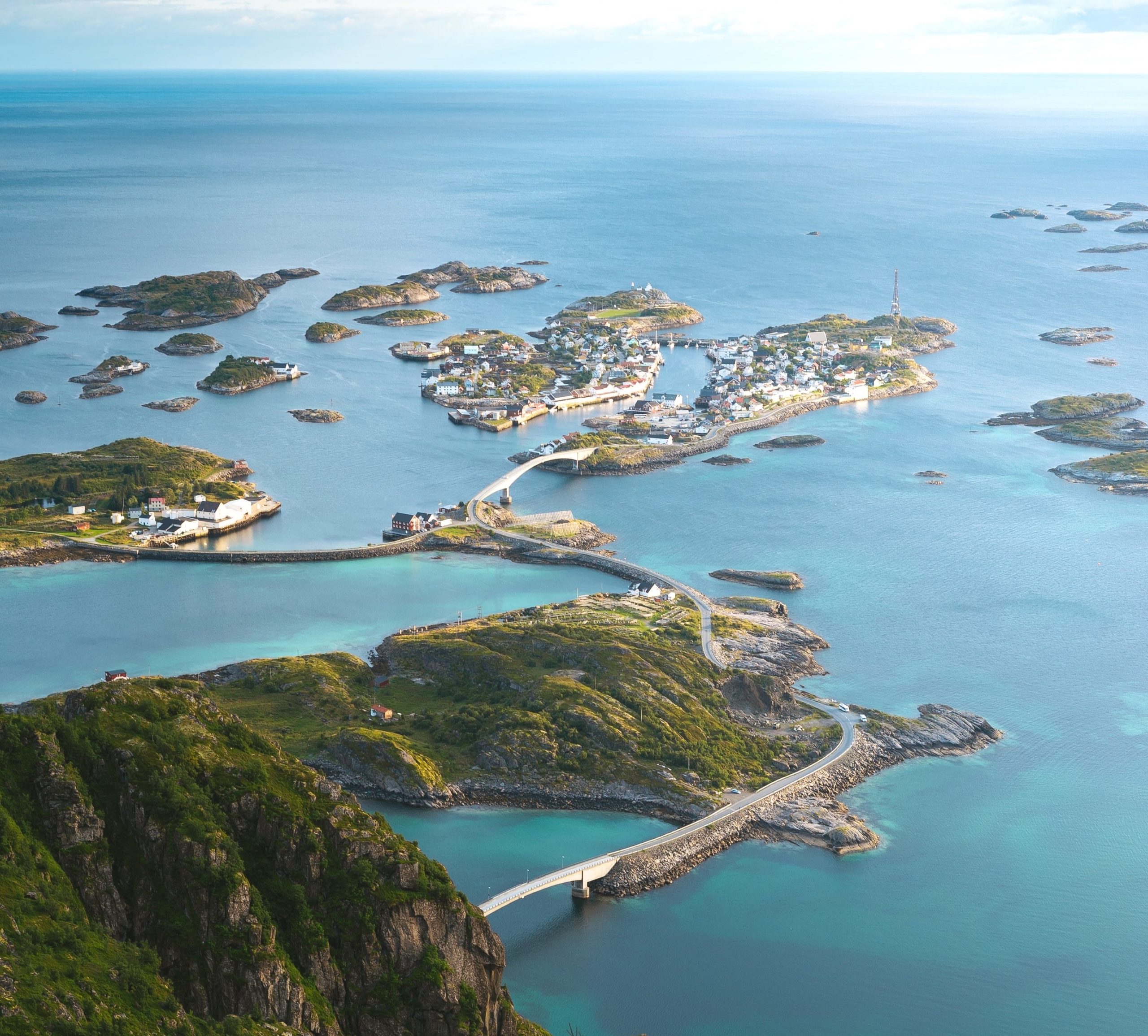Lofoten Islands
Protruding from the northwest coastline of Norway, 1500 miles below the north pole and 100 miles above the arctic circle, the Lofoten Islands rise from the icy, blue-green waters, as a wall of gneiss bedrock. The height of the mountains here reaches 1000m and the islands themselves are bordered by a white sandy coast. The Lofoten archipelago is known for its remote, rugged beauty. Painters and authors have long drawn inspiration from the islands. Intrepid cyclists are now being attracted to these islands, for a bike tour of epic proportions.
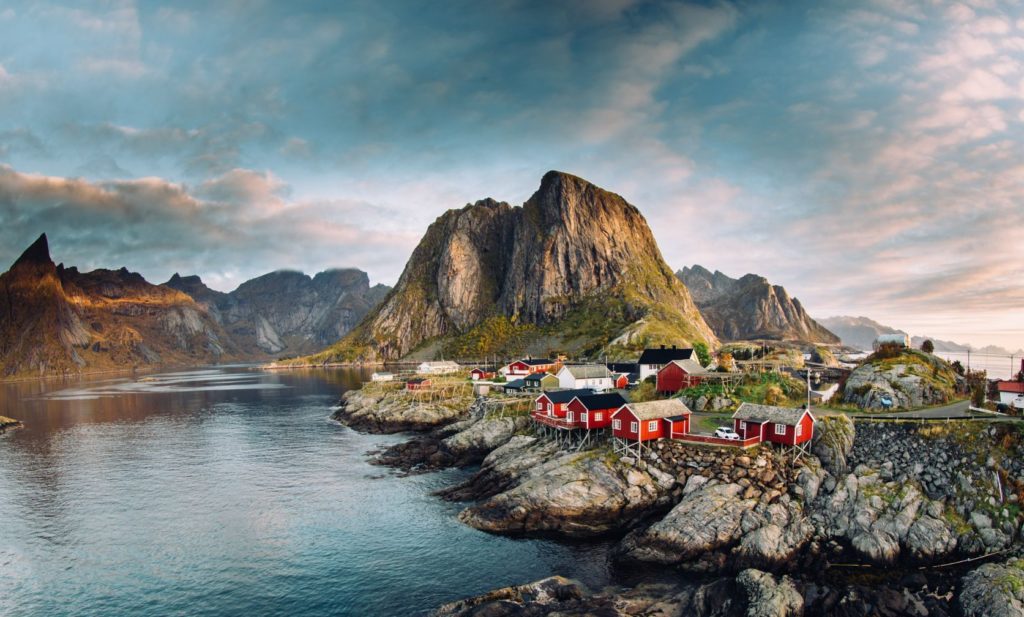
The landscapes are magnificent, with flocks of seabirds scattering the air in search of food and picturesque fishing villages nestled into protected bays. The population of the five main islands is 25,000.
10 Things You Might Not Know About Lofoten
Number 1: The archipelago took its name from the island of Westwogey, which was formerly called Lofoten. Lofoten is translated from Old Norse as ‘trot leg’. Probably, to the inhabitants of that time, the shape of the island resembled the foot of a lynx.
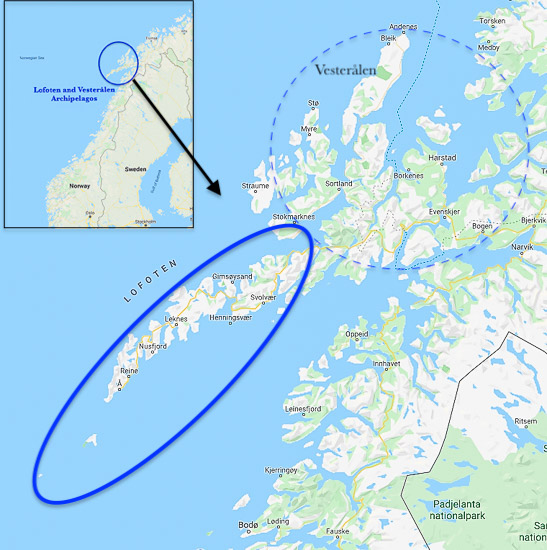
Number 2: People came here relatively recently, around 6000 years ago. In those days, the conditions for life on Lofoten were very favourable; a cool, but generally mild climate, with a huge amount of fish in the sea and game in the mountains. The rocky islands of today would have been covered in coniferous and deciduous forests.
Number 3: In Svolvær, (midway up the archipelago) the sun is seen above the horizon continuously from 25 May to 17 July. When the midnight sun is seen in the Arctic, the sun appears to move from left to right.
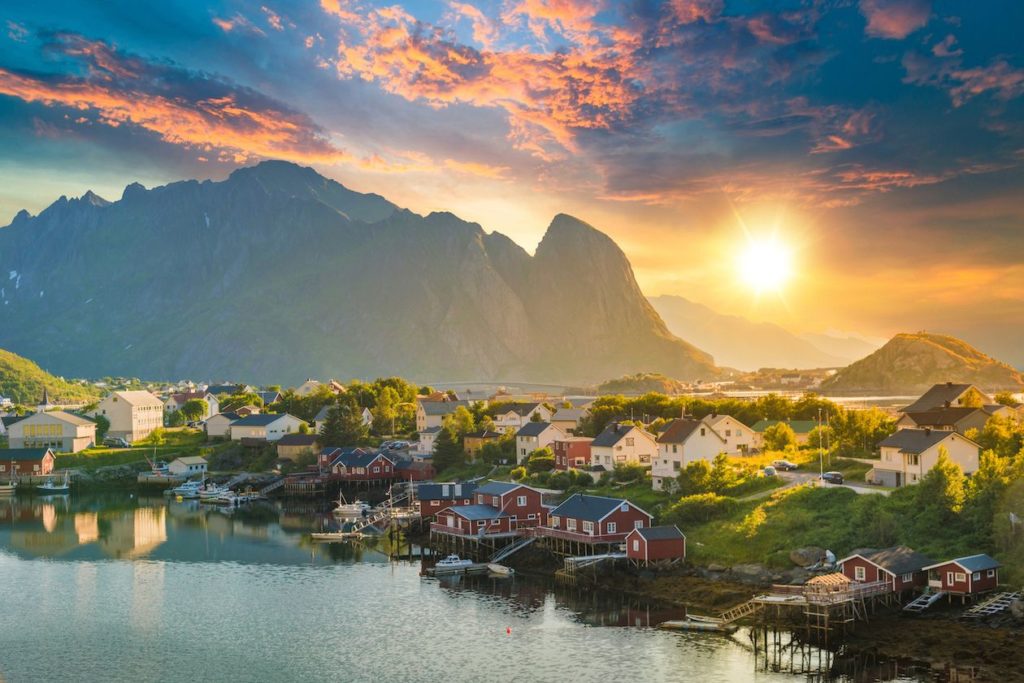
Number 4: Approximately 70% of all fish caught in the Norwegian and Barents seas use the waters around the Lofoten islands as a breeding ground. The islands have been the centre of great cod fisheries for more than 1000 years, especially in winter, when the cod migrate south from the Barents Sea and gather in Lofoten to spawn.
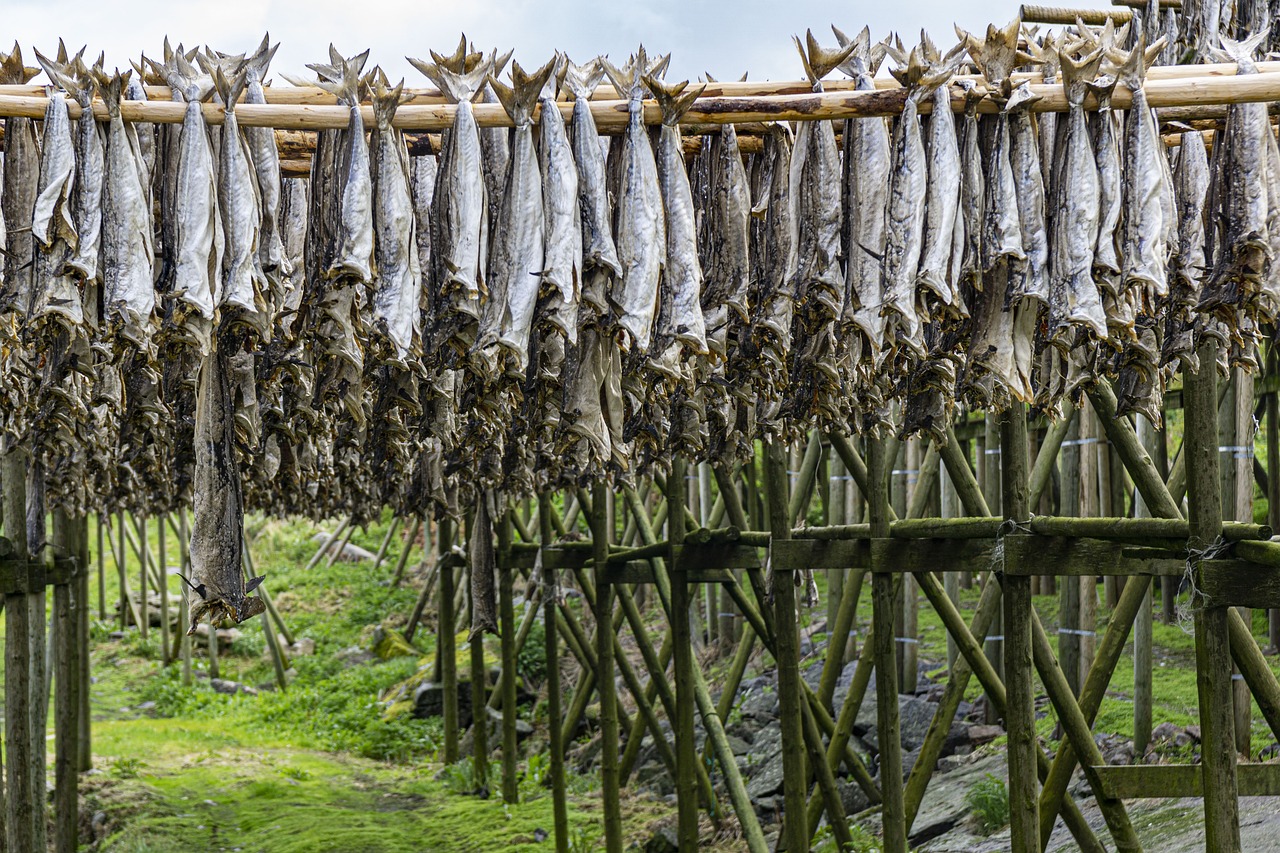
Number 5: The world’s largest deep-water coral reef, The Rost Reef is located 60 miles west of the island of Røstlandet. The reef was discovered in 2002, about 100 kilometres (62 mi) west of the island of Røstlandet. 27 miles long and 4 miles wide, the reef is generated by the coral Lophelia pertusa, and is the world’s largest known Lophelia reef.
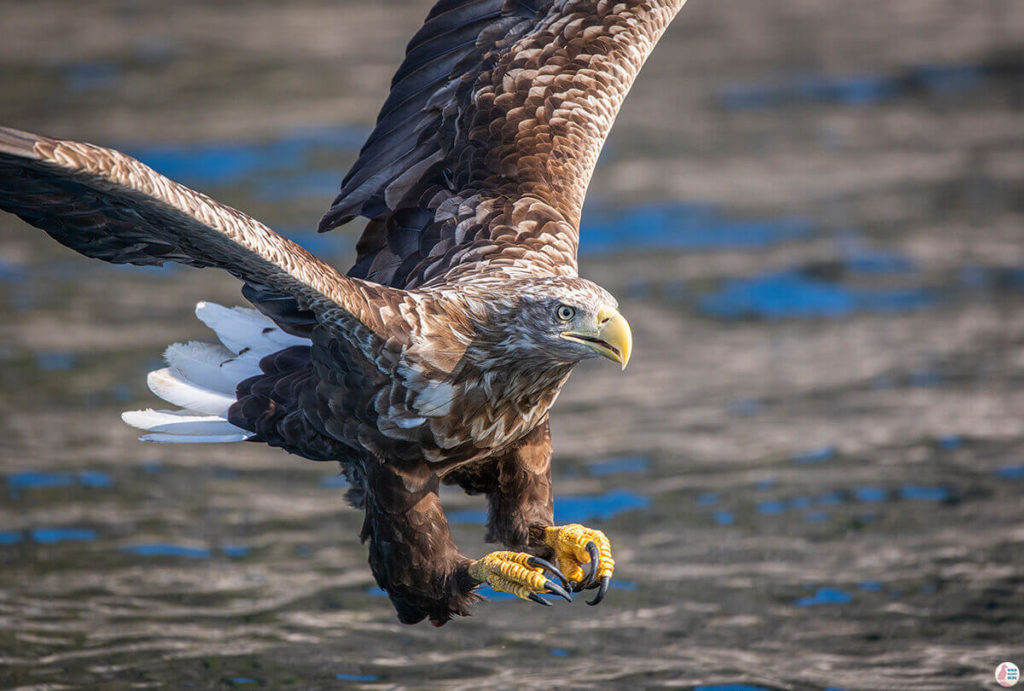
Number 6: Lofoten has a high density of sea eagles, cormorants and millions of other sea birds, among them the charismatic puffin. It boasts mainland Europe’s largest seabird colony. Puffins mate for life. Every year, during the breeding season, pairs separated by thousands of miles, for months on end, somehow reunite at the same burrow. Puffins have special glands behind their eyes that filter excess salt out of their blood and excrete it through their nostrils. This adaptation allows them to remain indefinitely at sea with no reliance on freshwater sources.
Number 7: ‘Operation Claymore’ was the name given to a British commando raid on the Lofoten Islands during the Second World War. The islands were an important centre for the production of fish oil and glycerine, used in the German war effort. The commandos achieved their objective, of destroying fish oil factories and some 3600 tonnes of oil and glycerine. After the raid, the Prime Minister, Winston Churchill issued a memo “to all concerned … my congratulations on the very satisfactory operation”.

Number 8: The first fishing houses, or Rorbu, were built here in 1120 by the order of King Oysten. Most of the Rorbu belonged to feudal lords at that time, who rented them out, along with tackles and a supply of food. Fishermen paid for the use of Rorbu with almost all of their catch. These days Lofoten fishermen are very wealthy people, and almost everyone has their own Rorbu, (often more than one). The houses are usually rented out to travellers in summer. The price for an overnight stay in a Rorbu is an order of magnitude higher than in an ordinary hotel.
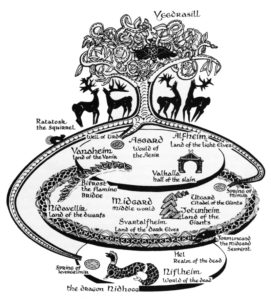
Number 9: In Norse cosmology, all beings live in Nine Worlds that centre around the cosmological tree Yggdrasil. The gods inhabit the heavenly realm of Asgard, whereas humanity inhabits Midgard, a region in the centre of the cosmos. Odin is a one-eyed, raven-flanked god, holding a spear in his hand. Odin pursues knowledge throughout the nine realms. The most popular god among the Scandinavians during the Viking Age was Thor. He wields a mighty hammer called Mjölnir. Thor is associated with lightning, thunder, storms, sacred groves and trees, strength and the protection of humankind.
Number 10: The ‘Lofoten Insomnia’ is a summer bike race held each year in the archipelago. The 234 km race starts from a place called simply Å. This is the most westerly point in Norway. The race begins in the middle of the night and is illuminated by the midnight sun.
+1 : The Coastal Route between Trøndelag and Bodø
Next-level outdoor adventures await in this cycling paradise. The Coastal Route between Trøndelag and Bodø, was voted one of the world’s most scenic roads.
